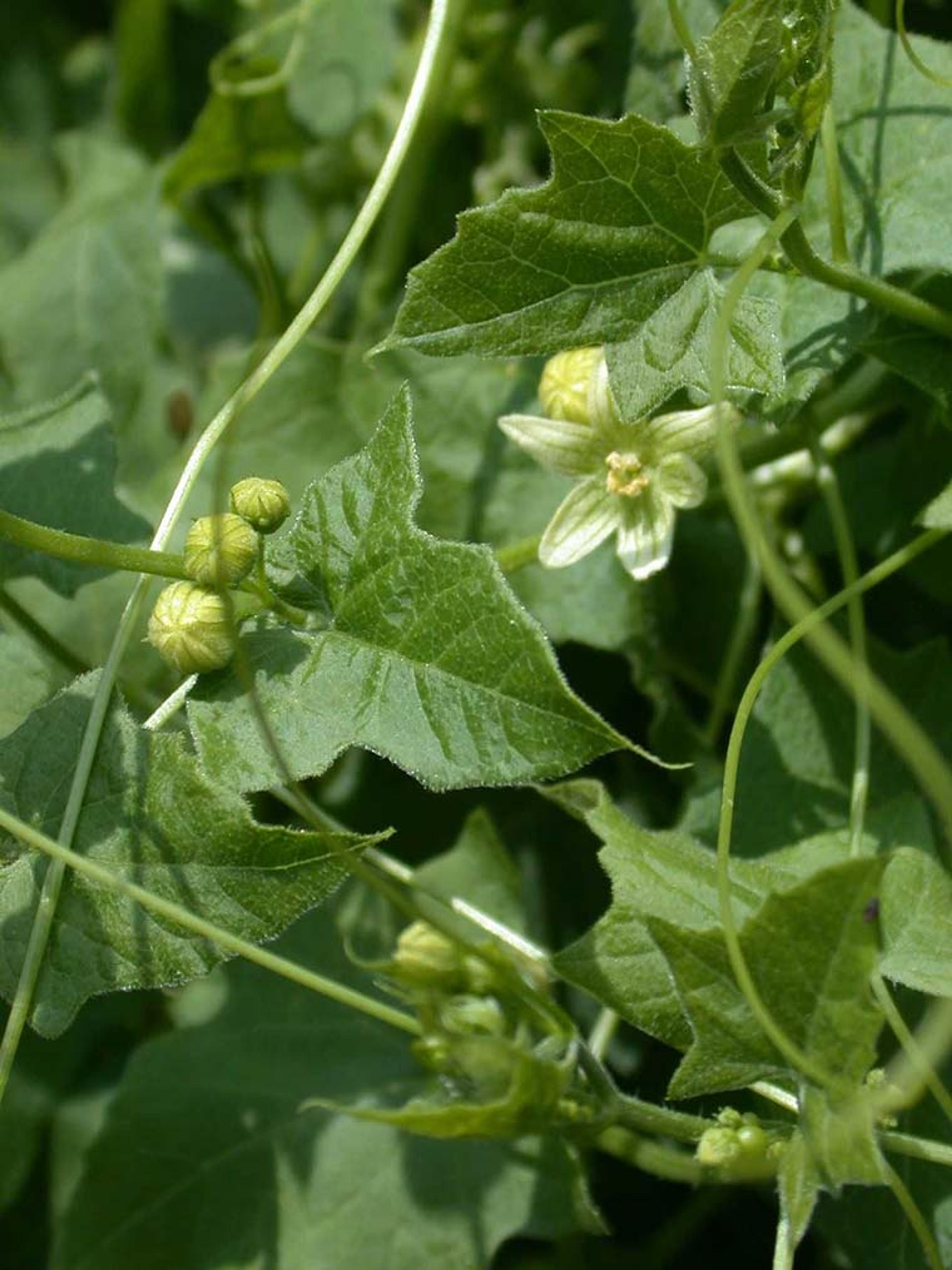The Medieval Garden Enclosed—Bye Bye, Bryony

Red bryony (Bryonia dioica) is distinguished from the closely related white bryony (Bryonia alba) by the color of the fruit. While both species bear white flowers, the berries of white bryony are black. Both red and white bryony have a long history of medicinal use, and the two species were sometimes confused in ancient and medieval sources. Photograph by Barbara Bell

The dainty flowers and delicate tendrils of the bryony vine were appreciated by medieval artists as well as gardeners. Bryony had magical and medicinal uses as well. Photograph by Nathan Heavers
The luxuriant foliage of the bryony vine begins to yellow and fall in September. By October all that is left are the small red berries that hang from a lacy network of slender brown stems. Although the vine dies back to the ground in early autumn, the root is perennial and will send up new shoots in the spring. Bryonia dioica is graceful even in decline; next May the vine will quickly veil a willow trellis in Bonnefont Garden with bright green leaves and show itself to be one of the prettiest plants in the collection.
The delicacy and refinement of bryony's tendrils and small white flowers belie the astonishing vigor of the plant, which has a massive root that can weigh several hundred pounds. The tremendous vegetable energy stored in the root means that bryony shoots can grow several inches in a day. The name of the genus derives from the Greek bryo ("I sprout.") While the flowers and foliage appealed to medieval artists, and the wild vine was brought into medieval gardens to adorn arbors and enclosures (John Harvey, Medieval Gardens, 1981), it was the root that was used in medieval medicine and magic.
A stylized rendering of the bryony vine ornaments a number of lusterware vessels in the Museum's collection, including two pharmacy jars of a type known as an albarello. (The albarello pictured above was made in Islamic Spain, but similar drug jars of tin-glazed earthenware were produced in Italy by the fifteenth century.)

Image: Pharmacy Jar. Spanish, 16th century. Earthenware, tin-glaze (lusterware), 12 5/8 x 6 3/8 in. (32 x 16.1 cm). The Metropolitan Museum of Art, Bequest of George Blumenthal, 1941 (41.190.225)
Red bryony (Bryonia dioica) is distinguished from the closely related white bryony (Bryonia alba) by the color of the fruit. While both species bear white flowers, the berries of white bryony are black. Bryonys, which belong to the Cucurbitaceae family and are related to cucumbers and melons, have a long history of medicinal use. However, B. alba and B. dioica species seem to have been confused by ancient and medieval herbalists. The confusion was exacerbated by references to yet another vining species, black bryony, Tamus communis, which is botanically unrelated.
According to the fifteenth-century Herbarius Latinus, bryony was employed as a purgative, a diuretic, and an abortifacient. (Frank Anderson, German Herbals to 1500, 1984.) Bryony was also included in a recipe for a medieval anesthetic preparation known as dwale, probably as a substitute for mandrake, although it does not have the narcotic properties of the latter. The fresh root, which contains an acrid juice, is a powerful irritant and cathartic. Ingestion can be fatal. Bryony root is no longer used therapeutically, except in the very dilute quantities employed in homeopathic medicine.
The magical reputation of bryony is conveyed by its common names of "English mandrake" or "false mandrake." The large root may be either simple or forked, and bryony was substituted for the rarer and more expensive Mandragora. Like that of the true mandrake, the root was used as an aphrodisiac and in love philtres.
Deirdre Larkin
Deirdre Larkin is the managing horticulturist at The Met Cloisters museum and gardens.